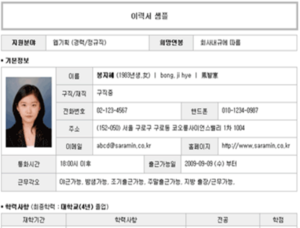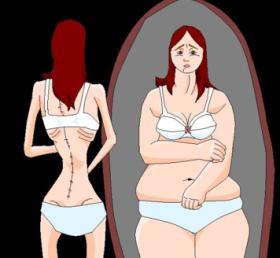GRSJ224/Lookism in South Korea
Lookism in South Korea
Appearance discrimination, or "lookism" is a preferential treatment based on conformity of social norms and standards of beauty. This includes physical features as well as style, grooming habits, weight, and any other external characteristics. These traits are often rated according to whether they are positive (making a person more attractive) or negative (making a person more unattractive). Consequently, victims are treated differently based on their positive or negative rating. In most cases, people who are believed to be more attractive are given special treatment while people who are unattractive may be denied opportunities (Cresap & Tietje, 31).[1]
Causes
Asian "Face" Culture
As most people become concerned and threatened when their self-respect is compromised, Asian people are very concerned about losing "face,[2]" in other words, losing the respect from others. Majority of people in Asia think that others' judgments of them are important, consequently, they tend to emphasize their appearances (Kim, Joo Yup, and Sang Hoon Nam). Such culture implants dangerous notions that in order to be accepted, respected and liked, men and women must groom and adorn their "faces" and bodies to mark their social statuses. As a result, more and more individuals are faced with pressures to meet certain ideals of beauty in society.
Social Media
Today, social media demonstrates trends in various forms, and it has power to change people’s ideas and society’s values. Just like how the Asian "face" culture inculcate lookism, social media has established a standard of charm and glamour. Instead of accepting individuality of personal appearance, the media stimulates and demands its audiences to follow and meet standard set by the media (Berry).[3]
Associated Consequences in South Korea
Employment
In South Korean society, beauty gives individuals many advantages in life including building strong social networks, finding a job and getting promoted. Though there is a great number of people who aim for employment, job positions are limited in number. Extreme competitiveness in South Korea's job market has led people to emphasize the importance of physical appearance as it differentiates one from others, thus increasing the likelihood of getting hired (Kim, Su Hyun).[4] With the increasing influence of lookism, people are judged by their physical appearances, rather than their abilities, talents, professional skills and personality. For example, most Korean companies require applicants' profile photos to be included in their resumes. Although conspicuous discrimination based on looks is discouraged in South Korean companies, it is an inevitable norm in most workplaces. To alleviate such problem, a bill was passed in a legislative committee in late 2016. This bill protects individuals as it would would fine employers if they inquire about their potential employees' personal information regarding their appearance such as height, weight, body size, or even birthplace, and marital status. However, this bill is stalled amid opposition from a key business trade group, the Korea Employers Federation, as the group argues that appearance matters in workplaces.
Physical appearances
Facing intense competition for jobs with benefits, many applicants feel compelled to enhance their appearances. Factors mentioned above has led to the obsession of South Koreans with the achievement of beauty, even to such extremes that cosmetic surgery is no longer a taboo and often it is even promoted to the people (Park, Bock Soon, and Joo Hyun Kim)[5]. In the media industry of South Korea, majority of celebrities feel the pressure to meet the ideal beauty standards as it will increase the likelihood of them becoming popular and famous. This is more prominent in the music industry where the promising future of K-pop idols is dependent, not only on their singing but also, on their appearance.
The pressure to look good and media's unhealthy, unrealistic body images cause people to question their looks and lose confidence in themselves resulting in obsessive dieting, various eating disorders and high cosmetic surgery rates.
Discussion
According to an intersectionality perspective, lookism is never engendered from the result of single, distinct factor; instead, it is the product of connections of different social locations, power relations and experiences. Hence, the impacts and consequences of lookism differ depending on one's experiences, social status, gender, level of education, geographic location, income, religion, sexuality and the list continues. Therefore, an intersectional perspective on lookism is necessary to understand the complexity of gender differentials and identity formations that co-produce and influence lookism.
The experiences of lookism differ by gender, for example, the social beauty standards for women undermine women's self-worth and additionally pressure them to conform to the beauty practices of femininity in the attempt to emulate the ideal profile (Foo)[6]. The brutality of female beauty practices has become much more severe; modern practices can demand the "breaking of skin, spilling of blood and rearrangement or amputation of body parts" (Foo)[7]. Moreover, body size has a greater impact upon women’s bodies because women have been subjected to more scrutiny regarding their appearance than men. In addition, the slenderness norm is applied in a much stricter fashion to girls’ and women’s bodies.
With respect to the production of inequalities, another theme that surfaces when investigating the intersection of gender and body size comes from the discussion about childhood obesity. The field of healthcare often emphases on obese children and recognizes accountability as an individual or family matter, rather than a collective or social responsibility (Zivkovic) [8]. These constructions have real-life implications where often single mothers face criminal prosecution for childhood neglect in US due to their obese children (LeBesco)[9]. This illustrates how power differentials related to body size come into play at an institutional level. Furthermore, within this discursive field, mothers are held more accountable both morally and legally of their children's body size because providing food and care for their family is considered a gendered responsibility.
References
- ↑ Louis Tietje and Steven Cresap (2005). "Is Lookism Unjust? The History and Ethics of Aesthetics and Public Policy Implications." Journal of Libertarian Studies, Vol. 19 No. 2, Spring 2005, pp. 31–50.
- ↑ Kim, Joo Yup, and Sang Hoon Nam. "The concept and dynamics of face: Implications for organizational behavior in Asia." Organization Science 9.4 (1998): 522-534.
- ↑ Berry, Bonnie. "The Media, the Economy, Globalization, and Other Forces." The Power of Looks: Social Stratification of Physical Appearance. Aldershot: Ashgate, 2008. 67. Print.
- ↑ Kim, Su Hyun. "Lookism in the Korean Business World and the Role of Business Management." (2012).
- ↑ Park, Bock Soon, and Joo Hyun Kim. "Structural Equation Modeling Intention of Revision Facial Cosmetic Surgery in Female College Students." Journal of the Korea Academia-Industrial cooperation Society 16.12 (2015): 8707-8718.
- ↑ Foo, Samantha Yee Yee. The Beauty Trap: how the pressure to conform to society's and media's standards of beauty leave women experiencing body dissatisfaction. Diss. Auckland University of Technology, 2010.
- ↑ Foo, Samantha Yee Yee. The Beauty Trap: how the pressure to conform to society's and media's standards of beauty leave women experiencing body dissatisfaction. Diss. Auckland University of Technology, 2010.
- ↑ Zivkovic T, Warin M, Davies M and Moore V (2010) In the name of the child: The gendered politics of childhood obesity. Journal of Sociology 46(4): 375–392 Big fat inequalities, thin privilege: An intersectional perspective on ‘body size’ (PDF Download Available). Available from: https://www.researchgate.net/publication/258135282_Big_fat_inequalities_thin_privilege_An_intersectional_perspective_on_'body_size' [accessed Dec 01 2017].
- ↑ LeBesco K (2004) Revolting Bodies? The Struggle to Redefine Fat Identity. Boston: University of Massachusetts Press.



